The Face of Another Read online
Page 5
When I had finished, I began work on vacuum plating the inner side with nickel. Since obviously I couldn’t do that at home, I surreptitiously took the die to the laboratory and, keeping it out of sight, completed the plating there.
At length, I came to the finishing touches. One evening, after making certain you had gone to bed, I placed an iron crucible filled with an alloy of lead and antimony over a propane flame. The melted antimony took on the color of cocoa mixed with too much milk. When I poured it carefully into the hollow of the mold plated with potassium alginate, drops of white steam gently eddied up. A transparent blue smoke first spurt forcefully from the hole of the rubber breathing tube, then rose from all around the circumference of the mask. Perhaps the potassium alginate was scorching. There was a terrible stench; I opened the window, and the chill January wind suddenly snapped at my nostrils with its claws. I turned the mold upside down and shook it, separating the hardened antimony cast, and extinguished the still-smoking potassium alginate base by submerging it in water. Silvery white scar webs, gleaming dully, flickered back at my own flesh-colored ones.
Somehow I could not believe that this was my face. It was different … too different.… These could not possibly be the webs so familiar to me that I could scream, the ones I always saw in my mirror. Of course, since the left and right of the antimony cast were the reverse of my face reflected in a mirror, some feeling of difference was unavoidable. Yet, I had already experienced this much variation with photographs without acutely sensing a difference.
Was it a question of color then? According to Henri Boulan’s Le Visage, which I had found in the library, a surprisingly intimate relationship apparently exists between facial color and expression. For example, a plaster-of-Paris death mask of a man will become that of a woman simply by the control of color. Again, one can detect the disguise of a man dressed as a woman if his photograph is taken in black and white. When I thought about this, color seemed a plausible answer. The ridges in the antimony cast were so slight as to be imperceptible if not held to the light; such faint un-evenness would probably be nothing to fuss about in a mask. For an instant I again started at the imprint of my scars, but wasn’t I unnecessarily wrestling with myself? Even these metal scar webs would have their own fine repulsiveness, I suppose, if they were tinted a flesh color. Perhaps. It’s a shame man isn’t made of metal.
If color was that important, tinting at the time of the final flesh modeling would have to be done with the utmost care. As I passed my hand, almost in consolation, over the surface of the still-warm antimony of the molded face, with the pleasure of a blind man in his sense of touch, I was awed by the complexities in the manufacture of this mask. The completion of one operation immediately prepared the way for another difficult problem. Of course, I had devised an extraordinary challenge. I had already come quite far in amount of time and work, but the essential choice of a facial type was still hanging. And now there was the additional difficulty of coloring. With such problems, I wondered when I would realize my dream of being reborn in another face.
No, certainly all the signs were not bad. The creases of the metallic scar webs made me reflect on the irrational role of the face: one must be sent packing like a mangy mongrel because of extra protuberances of barely two or three millimeters. Suddenly I discovered the really vulnerable spot in my enemy.
These metallic scar webs could exist only as a negative picture for making the back of the mask. How shall I put it: it was a negative existence which was to be covered over by the mask and thus wiped out. But was that all? It was indeed a negative existence, but even a mask that would wipe out the scar webs could not possibly exist without using them as a base. In short, this metal base was the point of departure for constructing the mask, and at the same time the mask’s objective was to obliterate the base.
Let’s try thinking a little more concretely. For example, I could simply use the eyes as they were, making no change in position, shape, or size. Suppose I went about it boldly; should I make a jutting forehead; or should I make the lower part of the face project; or, if neither of the two, should I make the whole thing bulge out, with goggle eyes? The same went for the nose and the mouth. Indeed, the choice of a facial type was apparently not the ambiguous thing I had imagined until now. Perhaps this manner of thinking was limiting, compared to a slapdash, grab-bag freedom in choosing, but it was far more suited to my nature. In any event, this way I could see what had to be done. Even though I might take the long road of trial and error, first I had to try actually modeling and studying what facial type was possible with the finished mask. This way of doing things really suited me. (Apparently my colleagues’ criticism of me—that I was more of a technician than a scientist—was not altogether off the mark.)
Unawares, I became totally absorbed, plotting the metal base from every angle with my finger, holding my two hands over it, covering and shading it. The molded face was such a delicate thing … with the touch of a finger it turned into a different person, more strange than a brother or a cousin … with a turn of the palm, an utter stranger.
I dare say this was the first time I was able to have such a positive feeling since I had started making the mask.
YES, I guess I could say that my experience that night was indeed one of the important and crucial points. It wasn’t all that impressive, but I considered it a decisive landmark, much like the point at which the water of a catchment basin takes a determined direction that leads at last into the river.
For the experience of that night was at least a turning point; and it was a fact that something like a channel, however uncertain, opened between the problem of the technical realization and the selection of a face, which until then had been nothing more than parallel lines. Even though I had no method in view for making the mask, I actually felt encouraged and confident that one way or another the possibility was there, precisely because I was accumulating concrete data.
I decided the following morning to purchase some clay and begin to practice modeling. I had not determined my goal, but I groped my way along fumblingly. Guided by an anatomical chart of the facial muscles, the work of carefully building up the thin clay layer by layer was dramatic, quite as if I were assisting at the birth of an adult, sentient human; and I felt that the rather pointless standard of choice itself was beginning to jell, gradually assuming palpable form. Some detective geniuses track their man from an armchair; others gather their evidence by laborious footwork: being on the move seemed to suit me best, too.
About that time, I began to take renewed interest in Henri Boulan’s Le Visage, which I mentioned before. Previously, I had the impression that his plausible analysis smacked rather of the scholar’s habit of classification, and I, driven by purely concrete motives, was plagued by the irritating question of just what use such explanations could be. However, when I came down to the manual task of fashioning the face, I discovered more in Boulan than classifications. There seemed to be quite a difference between the map of a country one knew and that of some unknown foreign land.
The following is a general summary of Boulan’s classification:
First, trace a large circle, using the nose as the center, and making the radius the distance between the nose and the tip of the chin. Next, on the same center make a small circle, taking as radius the distance between the nose and the lips. There are two types of face, depending on the relationship between these two circles: concave and convex. Further, one may obtain a total of four basic facial types by differentiating between bony and fatty types of each:
Concave type, bony: strong projection of the flesh in forehead, cheeks, and chin.
Concave type, fatty: slight swelling of the fatty tissue in forehead, cheeks, and chin.
Convex type, bony: sharply pointed face, centering around the nose.
Convex type, fatty: slight frontal projection, centering around the nose.
Of course, these do not cover all facial types. The four basic types may be further ramified i
nto any number of secondary types, depending on a synthesis of contradictory factors, on sectional emphasis, or on the shading of details. However, as far as I was concerned, there was no need to trouble myself with such subtleties. Since I would build up the tissue from the bottom, layer on layer, things could not be expected to go according to calculation. As long as I did not forget the base itself, I could well let the rest take whatever course it would.
A Jungian analysis of the four basic facial types would suggest that the first two types are introversial, and the second two are extroversial. Also, numbers one and three tend to be antagonistic to the outside world, while numbers two and four tend to be conciliatory. It is possible to make up a personality combining the two odds and the two evens.
Even more order is brought to the problem if you link to this method of classification Boulan’s ideas in Les Eléments de l’expression, a work that shows quantitatively the respective influences exerted on expression by over thirty muscles controlling nineteen areas of movement by order of their degree of mobility. The method of calculation is also interesting. By continuously photographing, from about 1,200 models, expressions ranging from laughter to perplexity, and dividing them up with contour lines as in a map, Boulan seems to have obtained the mean value of the function of the various points of movement. His conclusions may be summarized thus: The density of expressive factors is greatest in the triangular area extending from the nostrils to the sides of the lips, gradually lessening around the eyes and the central forehead, which is the least dense area of all. In short, the faculty of expression is concentrated in the lower part of the face, more precisely in the area around the lips.
The distribution of factors by area is furthermore influened and modified by the state of the subcutaneous tissues. The density of factors decreases in proportion to the thickness of these tissues. But sparseness of factors doesn’t necessarily mean lack of expression. There is sometimes no expression even when the density is great, and there are frequent instances of expression where the density is low. In short, lack of expression exists with both high and low density of factors.
EXCURSUS: Shall I try applying Boulan’s law of classification to our faces just as an experiment? Your face first. I suppose, if I had to put you in one category, you would be considered a convex type. Subcutaneous tissues slightly fatty. Therefore, you tend toward type four: weak frontal projection centering around the nose. From the standpoint of Jungian psychology, you are extroverted and pacific. The expressive factor is rather low and your expression is stable, with little fluctuation.
What do you think? I’ve hit the nail on the head, I believe. I seem to remember your saying you used to be nicknamed “saint” during your school days. The first time I heard that, I broke out laughing. But … what was so funny? I seemed to have had a very wrong idea either about saints or about you. Of course, judging only from the outside, I suppose you could even be said to have very individual, sensuous features. Yet, considering the inside, too, you did indeed have the face of a saint, according to Boulan’s classification. An outgoing and peaceable disposition is like a three-foot wall of crude rubber. Infinitely pliant, but inviolable. Such a face does have the half-closed eyes and the faint smile of a saintly image, it’s true, but those very elements compose the features of someone who wins without weapons. When I looked at you from a distance you would smile invitingly, but when I approached, the smile would change into mist and obstruct my view. I should like now to express my heartfelt respect for the one who invented your nickname—“saint.”
Was it sarcasm? I wonder. If there was a thorn in it somewhere, it was surely my fault alone, not yours. It may be that someone else’s tenderness can be experienced only as pain.
Well, next, my face…. No, let it go. There’s nothing to be gained at this point by discussing a face that’s completely gone. How should one consider those whose faces are so completely transformed that they do not fit into any classification, like, for example, the Tazarawa tribe with their huge, saucer-like lips? I should like to hear what Boulan would have to say about that.
And, as I had expected, my fingers were considerably more successful than my head alone would have been. As a result of my brief tests on each of the four basic types over a period of about ten days, I had decided to eliminate two of them, and then choose which of the remaining two would be the better.
The one I disqualified first was type four—slight frontal projection; centering around the nose. This type of face had the area of highest density of factors enveloped by fatty layers, so it was highly stable and, once completed, would be quite devoid of expression. I would be obliged to plan the work all the more carefully from the beginning, and the construction would be quite troublesome. I decided to shelve it for the time being. EXCURSUS TO AN EXCURSUS: In the excursus just before this account I may have appeared to have something in the back of my mind, but I positively intended only one meaning. For, to begin with, there was a time lapse of about three months between the text and the excursus.…
Next to be disqualified was number one, the concave, bony type—a strong projection of the flesh in the forehead, cheeks, and chin. From the standpoint of Jungian psychology it had, in short, an introverted, antagonistic character, and was unstable to boot. At best, that type was the face of a usurer who had never lost a penny. It couldn’t be the mask of a seducer. Though this was merely an impression, the type did not appeal to me and I decided to drop it.
Having disposed of two in this fashion I now come to the remaining two.…
“A slight swelling of the fatty tissue in forehead, cheeks, and chin.…” According to Jungian psychology, this would be an introspective, self-controlled, peaceable face.
“Sharply pointed face, centering around the nose.…” According to Jungian psychology, this would be an ambitious face, capable of action, or a hostile, extroverted one.
I had the feeling I could foresee the future. There was a big difference in choosing between types four and two. Four was not simply two times two but contained six combinations for comparison. In short, I was able to reduce the work of choosing by one-sixth. Moreover, the remaining two were contrasting types with rather striking differences; there could be no possibility of confusing them and thus complicating my decision. I should necessarily arrive at the face I was aiming for by just continuing my modeling.
I abandoned myself for some time to a comparative investigation of the two types. However, I had only one face mold, and it was really inconvenient to have to destroy and reconstruct it with every trial. I hit upon the idea of purchasing a polaroid camera. You snap the shutter and the film is developed on the spot. It was convenient to be able to line up the pictures for immediate comparison, and also I could keep a minute-by-minute record of production.
Yes, my heart, singing then like a cicada, for the first time experienced a feeling of the nymph emerging from the earth. I was heedless of the fact that everything might again be brought to a standstill.
ONE day, the sky was smoldering in a south wind, and the central heating, which had been left on, was stiflingly oppressive. When I looked at the calendar, February had more than half gone by. Naturally, I was disturbed. I should have liked to complete my work while the weather was still cool. As far as mobility and texture were concerned, my mask was nearly perfect, but I had not yet figured out ventilation. I would perspire; the mask would be difficult to attach—I could foresee physiologically harmful effects. Yet there were three more months of detours until I came to the opening scene of finding my hideaway at the S— Apartments.
Why in heaven’s name did I take such a roundabout way? At first blush, the work seemed to be going very smoothly. I had become so proficient as to be able to draw by heart each of the types I favored; and whenever I saw a face that belonged to one of them, I immediately analyzed its factors, going so far as to revise them in my imagination. Well, since the materials were all at hand, I might as well choose the one I liked best. But there was no question o
f choosing one of the two, unless I could apply some standard. No matter how much one is pressed to choose between red and white, there is no sense in choosing without knowing whether it’s to be the color of tickets or of flags. Ah, once again the blindman’s buff of standards! Indeed, is any mystery not soluble by simple footwork? Of course, my standards now have come to mean something different from what they once did. However, my irritation became all the greater as my choice grew clearer. The peaceable type had the merit of peaceableness, but the unpeaceable type had its own virtue. There was no room here for value judgment. The more I knew, the more I was interested in each type. Hard-pressed and despairing, I thought many times how much better it would be to settle the whole thing with a throw of the dice. But as long as there was even a slight metaphysical significance to the face, I could not possibly commit such an irresponsible act. From the results of my investigations alone I could not help but accept the fact, however disagreeable, that facial features had considerable relationship to the psyche and the personality.
But, as soon as I thought of the corpse of my own face covered by scar tissue, I wanted to reject all meaning for the face. Suddenly I was seized by a violent shaking, like some soaking-wet dog. What in heaven’s name were psyche and personality anyway? Had such things ever been of any help in my work at the Institute? No matter what a man’s personality, one and one are always two. So long as an individual is not engaged in a profession in which the face is the measure by which he is judged—people such as actors, diplomats, hotel and restaurant employees, private secretaries, swindlers—the personality signifies no more than the serrations of tree leaves.

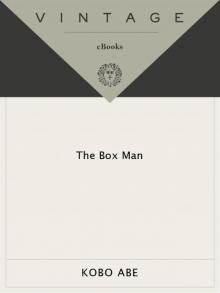 The Box Man
The Box Man Beasts Head for Home
Beasts Head for Home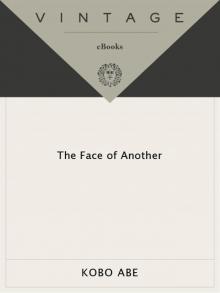 The Face of Another
The Face of Another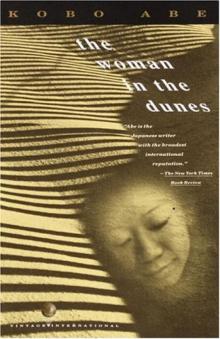 The Woman in the Dunes
The Woman in the Dunes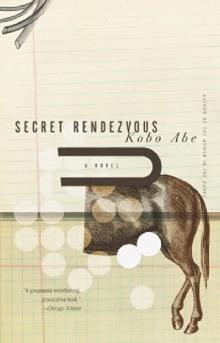 Secret Rendezvous
Secret Rendezvous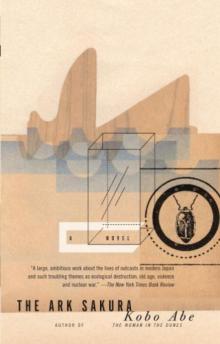 The Ark Sakura
The Ark Sakura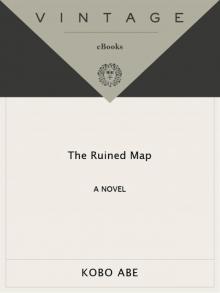 The Ruined Map
The Ruined Map